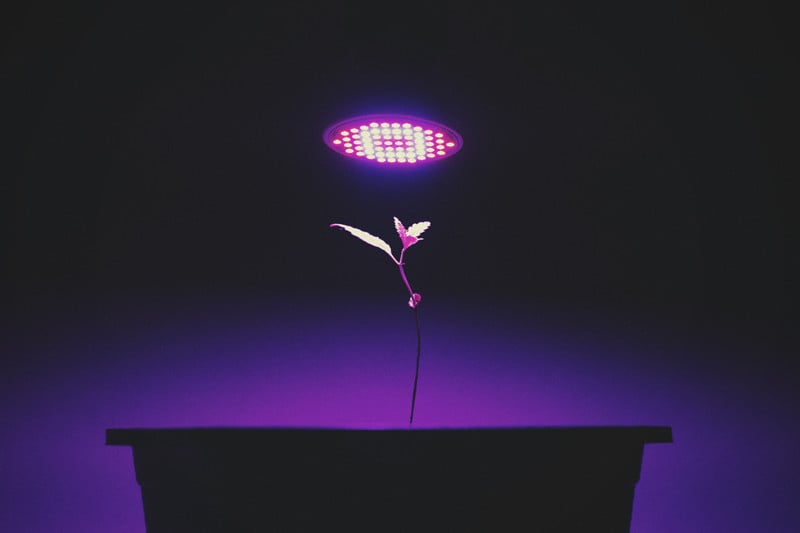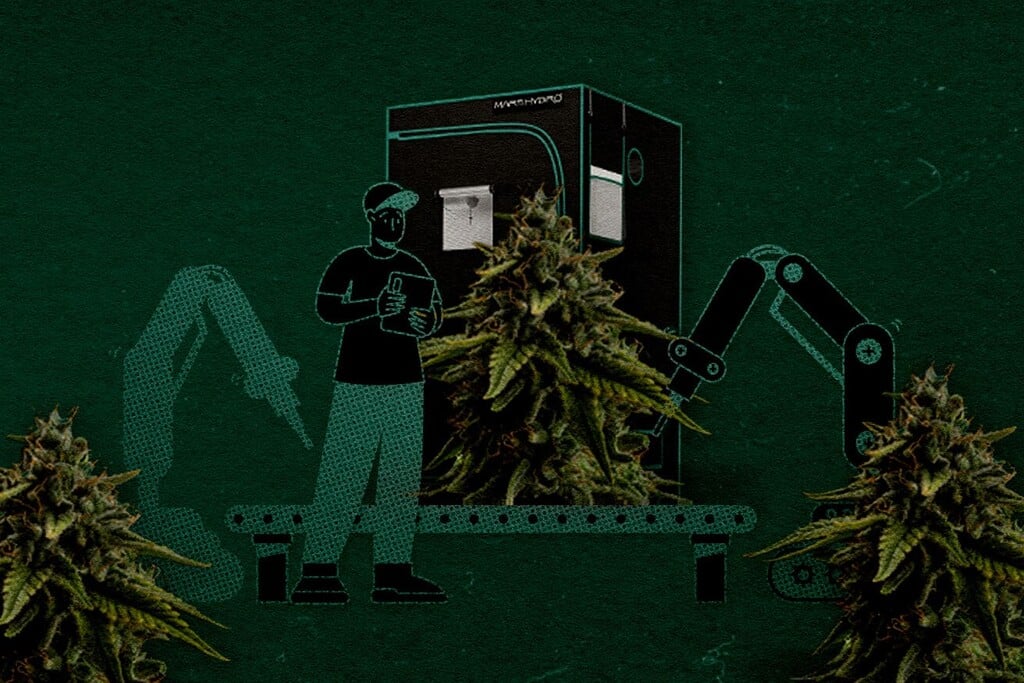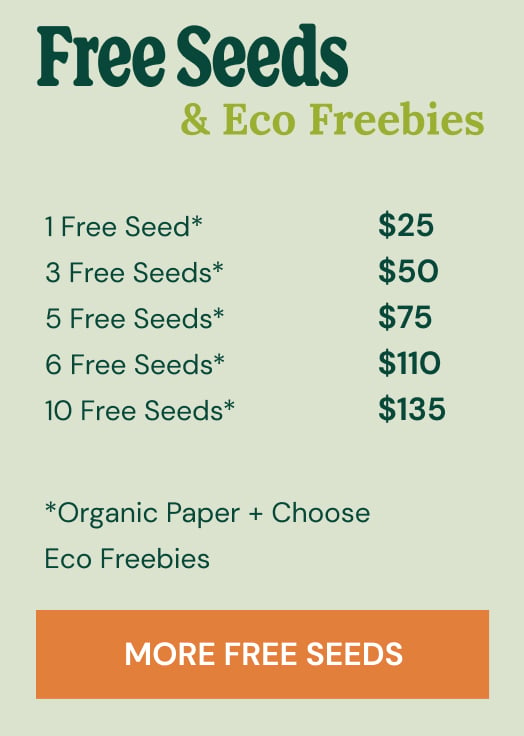.
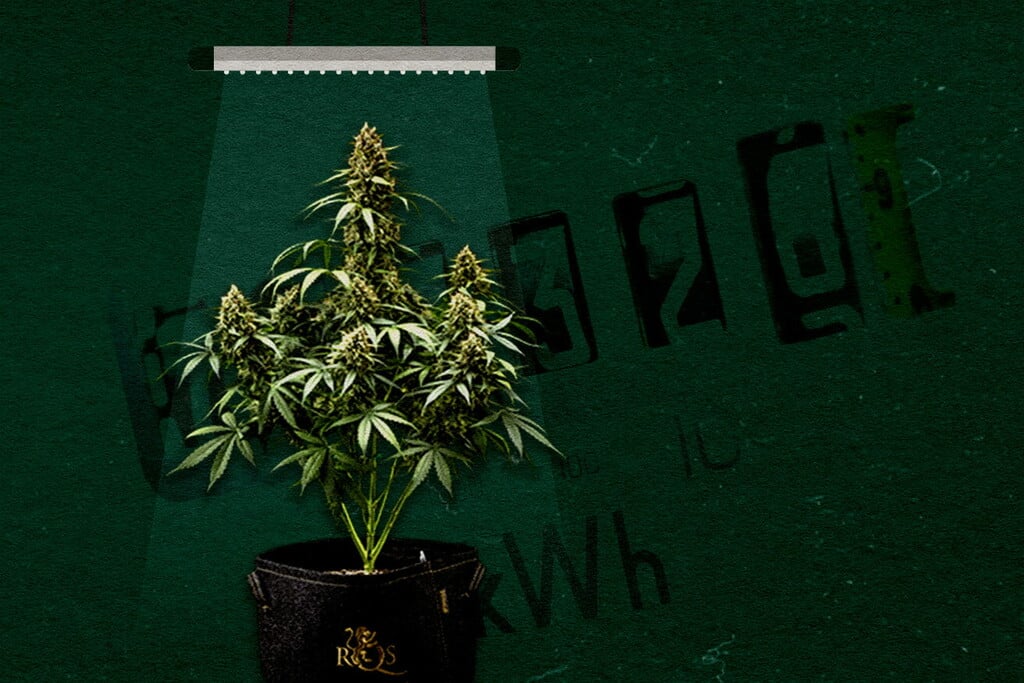
What Size Grow Light Do I Need? Right Grow Light Wattage for Indoor Plants
Struggling to pick the right grow light wattage for your indoor cannabis setup? This guide explains light wattage, debunks myths, and introduces smarter lighting metrics like PPFD and DLI. Learn how to optimise light intensity for different growth stages, tent sizes, and plant types to maximise your yields.
Contents:
- Why grow light wattage matters
- How much wattage do you need? key factors to consider
- How many watts per square foot for led grow lights?
- Led vs hps wattage equivalency
- How par, ppfd, and dli relate to wattage
- How to analyse par maps and light uniformity
- Advanced features worth considering
- Final thoughts: choosing the right grow light wattage
When looking to establish an indoor cannabis growing setup, many new cultivators hit a stumbling block when it comes to figuring out lighting. They quickly find themselves asking: “What size grow light do I need?” or “How many watts should a grow light be?”.
Finding the answers to these questions seems like an easy task, but things can quickly get murky when comparing bulbs, fixtures, and technical specs. Amongst the many variables to consider, wattage is particularly important—understanding the term and what it actually means is essential for producing healthy plants and big yields. However, other lighting metrics can help paint a clearer picture of how to maximise your setup for even better results.
Below, we’re going to break down light wattage for indoor cannabis plants. We’ll tackle common myths, introduce more relevant metrics such as PPFD and DLI, and help you figure out the exact size and power of lights you need for a particular setup.
Why Grow Light Wattage Matters

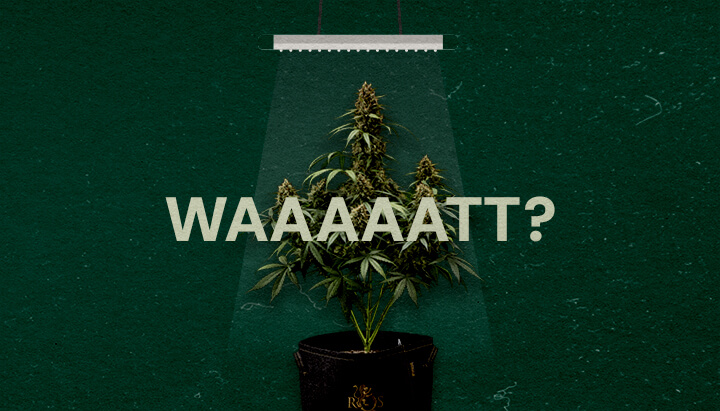
First things first; let’s define wattage. This unit simply refers to how much electricity a light consumes—not how much light it emits. Understandably, this often confuses new growers.
For example, an older 600 W HPS (high-pressure sodium) bulb will emit less usable light than a modern, well-designed 200 W LED—which will also consume less electricity.
Growers tend to use metrics other than wattage to gauge how much usable light a device will emit. These include:
- PPF: Also known as photosynthetic photon flux, this metric measures the total usable light a system emits.
- PPFD: Photosynthetic photon flux density tells us how much usable light actually hits the canopy.
Wattage certainly isn’t the best and most modern metric for determining the type of light emitted from a device. However, it is still useful for understanding:
- Energy consumption: Wattage tells you how much electricity your light will use, which will directly impact your energy bill. Knowing the wattage of your grow light, therefore, will help you budget your grow.
- Heat output: Lights with higher wattage often produce more heat, which can stress plants and require additional cooling systems such as fans and even air conditioning.
- Equipment selection: Focusing on wattage is a simple and clear way for beginners to compare grow lights before diving into more complex metrics.
- Estimating light intensity: While not perfect, wattage does offer a ballpark figure and rough but practical estimate of what kind of light intensity you can expect from a particular system.
Grow Light Cost Calculator
Seedling Stage
Calculator results
Vegetative Stage
Flowering Stage
Grow Light Cost Calculator
Seedling Stage
Calculator results
Vegetative Stage
Flowering Stage
How Much Wattage Do You Need? Key Factors to Consider
So, what grow light wattage for indoor plants should you aim for in your growing setup? Keep reading to discover how to figure this out, depending on the growth stage of your plants, the size of your space, and the number of plants you’re growing.
Plant Type and Growth Stage
Plants have different light requirements. For example:
- Low-light plants like lettuce and herbs need roughly 100–300 µmol/m²/s
- Medium-light plants like tomatoes and peppers need 300–700 µmol/m²/s
- High-light plants like cannabis benefit from 550–1000 µmol/m²/s
To achieve the lower PPFD needed to grow plants such as lettuce and herbs, you’ll only need 150–250 W/m². To hit the higher PPFD requirements when growing tomatoes or cannabis, you’ll need 400–600 W/m².
When it comes to cannabis, you’ll also need to consider the PPFD your plants require during the different stages of their growth cycle. It’s important to get this right, as too little or too much light at each stage can stress your plants and stunt their growth. See the table below for an outline of the light intensity needed for different stages of cannabis plant growth.
| Growth Stage | PPFD |
| Seedling | 100–300 µmol/m²/s |
| Vegetative | 400–600 µmol/m²/s |
| Flowering | 800–1000 µmol/m²/s |
| Seedling | |
|---|---|
| PPFD | 100–300 µmol/m²/s |
| Vegetative | |
|---|---|
| PPFD | 400–600 µmol/m²/s |
| Flowering | |
|---|---|
| PPFD | 800–1000 µmol/m²/s |
Grow Space Size and Shape
To achieve optimal light intensity, your total wattage also needs to scale with the size of your growing space. Here’s a useful reference table:
| Tent Size (cm) | Area (m²) | Recommended Wattage Range |
| 60×60 cm | 0.36 m² | 100–150 W |
| 90×90 cm | 0.81 m² | 200–300 W |
| 120×120 cm | 1.44 m² | 350–500 W |
| 150×150 cm | 2.25 m² | 500–650 W |
| Tent Size: 60×60 cm | |
|---|---|
| Area (m²) | 0.36 m² |
| Recommended Wattage Range | 100–150 W |
| Tent Size: 90×90 cm | |
|---|---|
| Area (m²) | 0.81 m² |
| Recommended Wattage Range | 200–300 W |
| Tent Size: 120×120 cm | |
|---|---|
| Area (m²) | 1.44 m² |
| Recommended Wattage Range | 350–500 W |
| Tent Size: 150×150 cm | |
|---|---|
| Area (m²) | 2.25 m² |
| Recommended Wattage Range | 500–650 W |
Larger tents need more wattage, but also better light dispersion. A single high-wattage light might create hot spots in the center and leave corners underlit. In these cases, multiple lower-wattage fixtures spaced evenly often work better.
How Many Watts per Plant?
Next up, you need to consider how many plants you’re growing in a particular space. The handy table below will help you figure out how many watts per plant you’ll need.
| Plant Type | Plant Size | Wattage |
| Lettuce | Small | 20–30 W |
| Herbs | Small | 20–30 W |
| Peppers | Medium | 40–60 W |
| Tomatoes | Medium | 40–60 W |
| Autoflowering cannabis | Medium | 50–70 W |
| Photoperiod cannabis | Large | 60–100 W |
| Lettuce | |
|---|---|
| Plant Size | Small |
| Wattage | 20–30 W |
| Herbs | |
|---|---|
| Plant Size | Small |
| Wattage | 20–30 W |
| Peppers | |
|---|---|
| Plant Size | Medium |
| Wattage | 40–60 W |
| Tomatoes | |
|---|---|
| Plant Size | Medium |
| Wattage | 40–60 W |
| Autoflowering cannabis | |
|---|---|
| Plant Size | Medium |
| Wattage | 50–70 W |
| Photoperiod cannabis | |
|---|---|
| Plant Size | Large |
| Wattage | 60–100 W |
How Many Watts per Square Foot for LED Grow Lights?

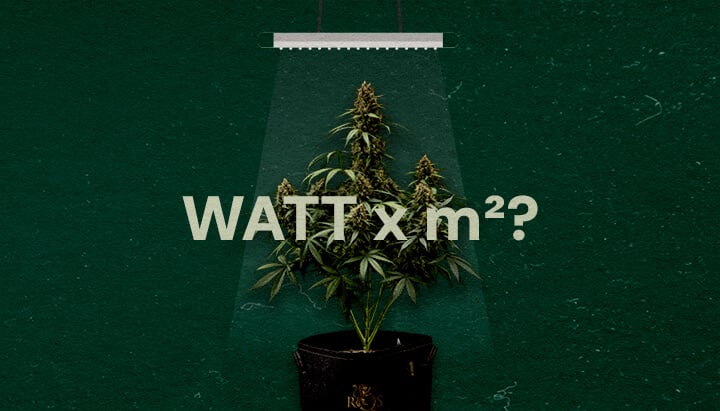
A common rule is 40 watts per square foot for flowering plants, but efficiency matters more. It’s important to consider PPE (photosynthetic photo efficiency)—a metric that measures how efficiently a light fixture converts electrical energy into photosynthetic active radiation (PAR). Consider the table below for a better understanding of this:
| LED Efficiency Tier | Watts per Sq Ft | Typical PPE (µmol/J) | Light Output (PPFD) |
| Low efficiency (older LEDs) | 50–60 W | < 1.5 | Low (≤400 µmol/m²/s) |
| Medium efficiency | 30–40 W | 1.5–2.2 | Moderate (400–700 µmol/m²/s) |
| High efficiency (modern Samsung diodes, etc.) | 25–30 W | ≥ 2.7 | High (700–1000+ µmol/m²/s) |
| Low efficiency (older LEDs) | |
|---|---|
| Watts per Sq Ft | 50–60 W |
| Typical PPE (µmol/J) | < 1.5 |
| Light Output (PPFD) | Low (≤400 µmol/m²/s) |
| Medium efficiency | |
| Watts per Sq Ft | 30–40 W |
| Typical PPE (µmol/J) | 1.5–2.2 |
| Light Output (PPFD) | Moderate (400–700 µmol/m²/s) |
| High efficiency (modern Samsung diodes, etc.) | |
| Watts per Sq Ft | 25–30 W |
| Typical PPE (µmol/J) | ≥ 2.7 |
| Light Output (PPFD) | High (700–1000+ µmol/m²/s) |
LED vs HPS Wattage Equivalency
HPS lights dominated indoor grows for years. But LEDs now match or beat their performance at lower wattages:
| HPS Wattage | LED Equivalent Wattage |
| 250 W | 75–100 W |
| 400 W | 120–150 W |
| 600 W | 250–300 W |
| 1000 W | 400–600 W |
| HPS Wattage | LED Equivalent Wattage |
| 250 W | 75–100 W |
| 400 W | 120–150 W |
| 600 W | 250–300 W |
| 1000 W | 400–600 W |
LEDs outperform HIDs in many areas—they emit less heat, have longer lifespans, and require less energy. Just make sure you're choosing high-efficacy diodes from reputable brands.
How PAR, PPFD, and DLI Relate to Wattage

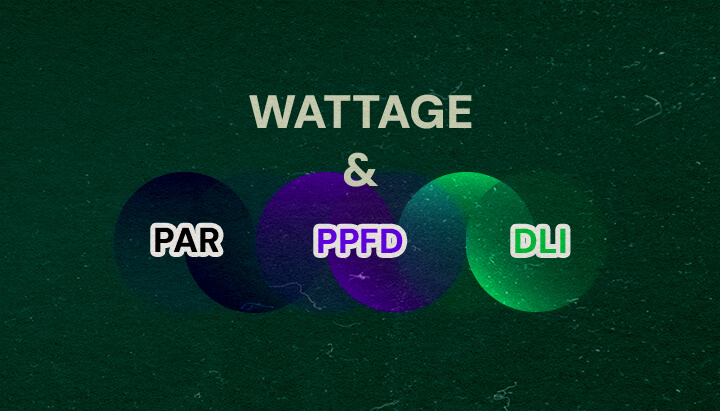
These terms sound confusing at first, but they all relate in fairly simple ways.
- Wattage: How much electricity your light uses.
- PPF: The total amount of usable light the fixture emits.
- PPFD: The intensity of that light at the canopy level (per second, per square metre).
- DLI (daily light integral): the total amount of light your plants receive over a full day.
DLI tells you how much daily light your plants need while PPFD details instant light intensity. PPFD is used to figure out DLI.
PPF, on the other hand, determines if your light can hit your target PPFD, while wattage simply tells you how efficient your light is.
Let’s say your plant needs a DLI of 30 mol/m²/day (common during flower) and your lights are running for 12 hours each day. You can use the following formula to determine the required PPFD:
- Required PPFD = (DLI ÷ (hours × 3,600)) × 1,000,000
This is what the equation looks like after plugging the numbers:
- Required PPFD = (30 ÷ (12 × 3,600) × 1,000,000 = 694.44 μmol
That means your grow light should deliver around 700 μmol/m²/s of PPFD evenly across your canopy to meet your plant’s daily light needs.
How to Analyse PAR Maps and Light Uniformity
As a home cannabis grower, understanding how light is distributed in your grow space is essential for maximising yield and maintaining healthy plants. One of the best tools for this is a PAR map—a visual representation of how much photosynthetically active radiation (PAR) reaches the different areas beneath your grow light. This is usually measured in PPFD (Photosynthetic Photon Flux Density) and expressed in micromoles per square meter per second (µmol/m²/s).
Here’s what to look for in a PAR map:
- Hot spots: These are areas—usually directly beneath the center of the light—where PPFD levels are excessively high (often over 1000 µmol/m²/s). While cannabis plants in the flowering stage can thrive in this range, sustained exposure to extremely high PPFD without proper CO₂ supplementation can lead to light burn, leaf stress, or wasted energy.
- Cold zones: The corners or edges of your grow space often show lower PPFD levels (below 200 µmol/m²/s). These areas might not get enough light for healthy photosynthesis, leading to underdeveloped buds or stunted growth. Cold zones typically appear in PAR maps of cheaper or poorly designed lights.
- Light uniformity: Uniformity refers to how evenly the light is spread across the entire canopy area. A good-quality grow light should maintain a 10–15% variation across the grow space. This consistency ensures that all plants, regardless of placement, receive similar light intensity, promoting even growth and bud development.
Before buying a grow light, look for manufacturer-provided PAR maps measured at different hanging heights. Compare these with the dimensions of your grow tent or grow area.
Advanced Features Worth Considering


After mastering the basics, scaling up the sophistication of your lighting system will help you get the most out of each growing cycle. The options below are a great place to start.
Dimming and Daisy Chain Controls
Investing in a dimmable light allows growers to adjust light intensity at the twist of a dial. This feature will let you cater to your plants at different stages of growth with a single light, and save energy when you don’t require full power.
Daisy chaining, on the other hand, allows growers to connect multiple lights into a single modular set up. This technique will let you power and control multiple lights from one source, allowing effortless management of multiple growing areas or a single large space.
Smart Controls and Customisation Options
Smart controls can help boost yields whilst reducing the need for frequent manual adjustment. Options that can help streamline cultivation in this way include app-based controllers, light scheduling timers, spectrum tuning, and automated sunrise/sunset cycles.
Final Thoughts: Choosing the Right Grow Light Wattage
While grow light wattage is an important baseline figure to consider, it doesn’t paint a complete picture of your light’s operation and efficiency. Consider the wattage of your light alongside PPFD, DLI, and a solid PAR map for a better understanding of the light you’re giving your plants.
Moreover, take the time to evaluate your grow goals, read product specs carefully, and when in doubt, go with reputable brands that provide real PPFD data and efficiency ratings for their systems. A smarter grow light choice today results in healthier plants and higher yields tomorrow.



























